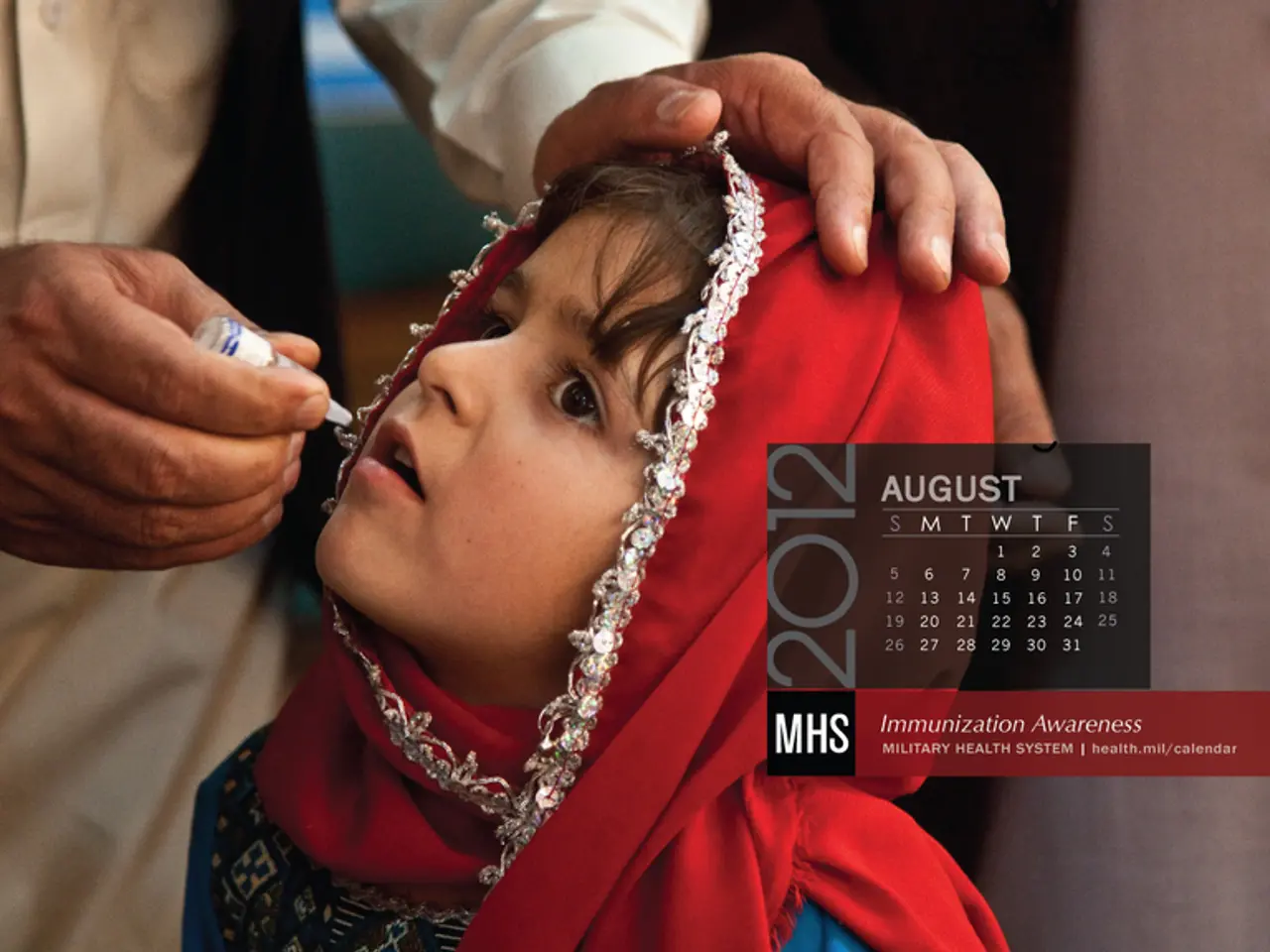Cold sore duration, stages, and treatments explained: Learn about the timeline of a cold sore, its progression through various stages, and acceptable treatment options.
Cold sores, also known as oral herpes, are a common viral infection that affects the lips and surrounding areas. Here's a comprehensive guide to the stages of a cold sore, its duration, and potential treatments.
Cold sores progress through a series of distinct stages, each characterized by specific symptoms. The stages include tingling/prodrome, blisters, ulcer/weeping, crusting, and healing.
| Stage | Description | Typical Duration | |-----------------|-----------------------------------------------------------------------------|------------------| | **Tingling/Prodrome** | Initial tingling, itching, burning, or tightness on or near the lips. | 1–2 days | | **Blisters** | Small, fluid-filled blisters form on a red, swollen area of the lip or skin. | 1–2 days (after tingling phase) | | **Ulcer/Weeping**| Blisters break open, ooze fluid, and form painful, shallow ulcers. | 2–3 days | | **Crusting** | Ulcers dry out and scab over, forming a dry, yellowish or brown crust. | 2–4 days | | **Healing** | Scab falls off, skin heals, and no new lesions form. Mild redness may remain.| 2–3 days |
Most cold sores clear up within 7 to 14 days, though individual experiences may vary slightly. Cold sores are contagious from the first tingling sensation until the sore is fully healed (scab has fallen off and skin is intact).
Additional notes include the fact that symptoms may overlap, and some stages may not be sharply distinct. Antiviral creams or medications can help speed up healing and reduce symptoms if used early, ideally during the tingling phase.
It's important to note the key differences between cold sores and canker sores. Cold sores are caused by the herpes simplex virus, appear on the lips or outside the mouth, are contagious, and have a distinct blister-to-scab cycle. Canker sores, on the other hand, are not caused by a virus, appear inside the mouth, are not contagious, and are flat ulcers.
Over-the-counter treatments such as topical cold sore creams, patches, numbing creams, and OTC medication like ibuprofen can help with swelling, soreness, and discomfort. For severe cases, a doctor may prescribe antiviral medications like penciclovir, famciclovir, or acyclovir.
Preventing the spread of cold sores involves avoiding touching the sore, kissing, or sharing utensils. People should also avoid contact sports, oral sex, wash hands regularly, and dispose of products that have directly touched the sore.
The virus that causes cold sores remains in the body throughout a person's life, but it may help a person with reoccurring cold sores to get adequate sleep, try relaxation techniques, seek treatment for anxiety, protect the skin and lips from the sun using SPF, avoid using tanning beds, and work with a doctor to treat cold sores with medication.
People can kiss once the cold sore has fully healed, which can take between 5 and 15 days. To prevent the virus from spreading, people should avoid kissing, sharing towels, dishes, or cutlery, and dispose of products that have directly touched the sore.
- For individuals living with multiple health conditions, such as HIV, diabetes, or bipolar disorder, managing cold sores may require additional considerations.
- Scientific research is underway to investigate the potential effects of medications like PREP on cold sore frequency and severity among high-risk populations.
- In the realm of mental health, depression and COPD patients might experience stress-induced cold sore outbreaks due to weakened immune systems.
- Nondigestive ulcers, a common health issue, should not be confused with cold sores, as their origins, symptoms, and treatments vary significantly.
- Predictive models suggest a correlation between skin-care practices and cold sore occurrence, advocating for diligent skin protection to lessen flare-ups.
- Therapies and treatments for mental health, such as cognitive-behavioral therapy, can help manage stress and boost overall immunity, potentially reducing cold sore frequency.
- Health-and-wellness enthusiasts pursue a balanced lifestyle that includes diet, exercise, and adequate sleep, which may lessen the likelihood of recurring cold sores in some people.
- NSCLC patients being treated with immunosuppressive therapies should be aware of the increased risk of cold sore outbreaks and discuss preventive measures with their healthcare provider.
- Incorporating good skin care habits, like moisturizing regularly and avoiding harsh chemicals, may help soothe and protect the skin during cold sore episodes, aiding in the healing process.




